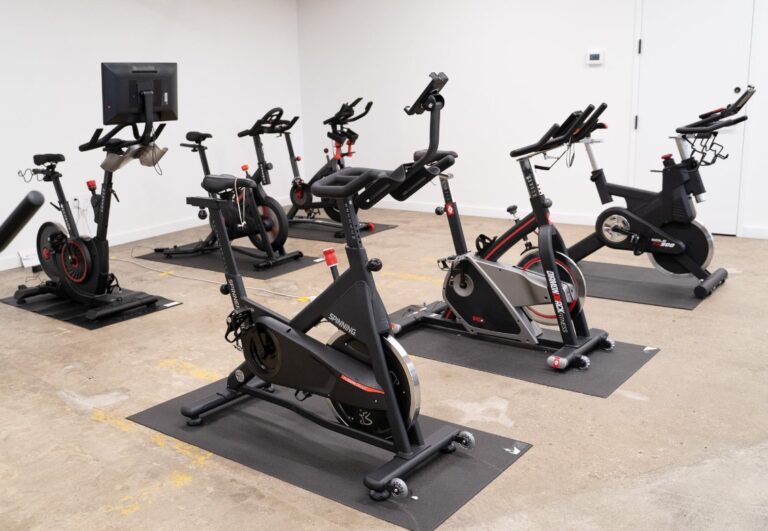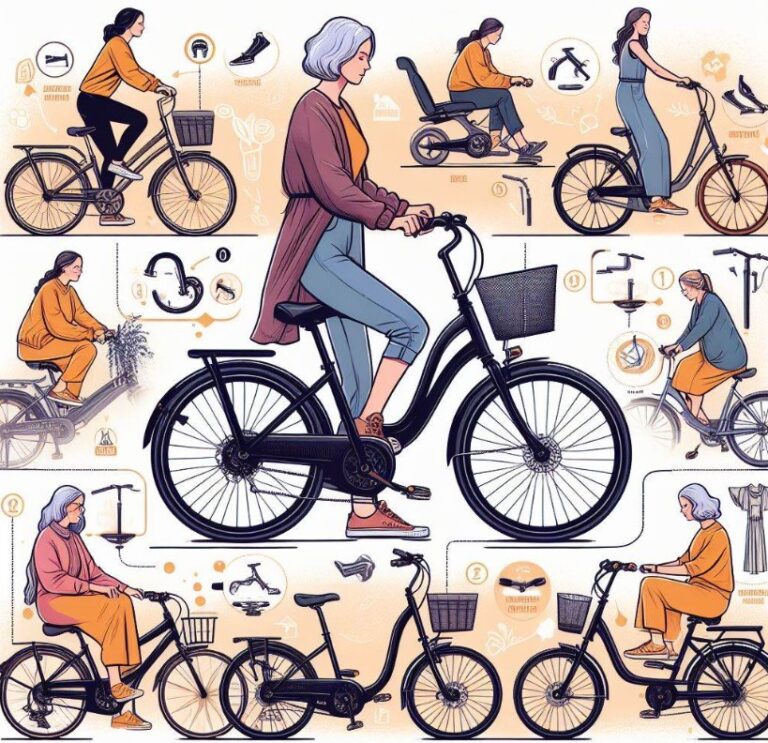How To Transition From Balance Bike To Pedal Bike? Explained
This article will explain How To Transition From Balance Bike To Pedal Bike? Transitioning from a balance bike to a pedal bike is a significant milestone in a child’s cycling journey. It marks the move from balancing and steering to mastering pedaling and managing more complex coordination. The key to a smooth transition lies in building confidence, practicing regularly, and gradually introducing the new skills required for pedal biking.
Key Takeaways
- Start with a balanced bike to develop core stability and steering control.
- Introduce the pedal bike in a familiar, safe environment to build confidence.
- Adjust the pedal bike to fit the child properly, ensuring they can touch the ground with their feet.
- Practice in short, positive sessions to maintain enthusiasm and focus.
- Celebrate progress and milestones to encourage continual learning and adaptation.
How To Transition From Balance Bike To Pedal Bike?
To transition from a balance bike to a pedal bike, follow these straightforward steps:
- Ensure Readiness: Confirm your child is comfortable and confident on their balance bike, demonstrating good balance, steering, and braking skills.
- Choose the Right Pedal Bike: Select a pedal bike that fits your child properly. They should be able to touch the ground with both feet when sitting on the seat and reach the handlebars and pedals comfortably.
- Adjust the Bike: Lower the seat to help your child get used to the pedal bike. This allows them to stop easily by putting their feet down.
- Introduce the Pedal Bike Without Pressure: Allow your child to explore the pedal bike at their own pace. Encourage them to walk with the bike first, then to glide as they did with the balance bike.
- Practice Gliding: Before using the pedals, have your child practice gliding on the pedal bike to get used to its weight and feel.
- Teach Pedaling: Once comfortable, encourage your child to start pedaling. Support them as needed by holding the back of the seat or their shoulders to help with balance.
- Encourage and Practice: Practice in a safe, flat area, gradually moving to slight inclines where they can learn to pedal without needing to push off too hard.
- Celebrate and Encourage: Offer lots of encouragement and praise for effort and progress, regardless of how small.

This method leverages the balance and confidence built on a balance bike, making the transition to a pedal bike smoother and more intuitive for the child.
Understanding the Transition Process
Transitioning from a balance bike to a pedal bike involves several steps that are designed to build upon the skills learned from the balance bike. It’s crucial to ensure that the child feels confident and excited about this new phase.
The transition should be seen as a natural progression, allowing the child to utilize their developed balance and steering skills while introducing the concept of pedaling.
Recognizing the Right Time to Transition
Identifying the optimal time to make the switch is paramount. Look for signs that your child is ready, such as proficient balance, a strong desire to explore further, or outgrowing the balance bike. This readiness often manifests between the ages of 3 and 6 but can vary significantly based on individual development and experience.
Preparing the Pedal Bike
Preparing the pedal bike is the next step, ensuring it’s the correct size and properly adjusted for the child. The seat height should allow the child to touch the ground with both feet, providing stability and confidence when stopping and starting. Additionally, consider starting with a lighter bike to make the transition easier.
Building Confidence and Skills
Building confidence is as crucial as teaching the mechanics of riding a pedal bike. Start in a safe, flat area, and encourage your child to practice starting, stopping, and eventually pedaling while you support them. Gradual progression and positive reinforcement will help solidify these new skills.
From Balancing to Pedaling
Initially, focus on the transition from balancing to pedaling. Encourage the child to glide on the pedal bike as they did with the balance bike, gradually introducing the concept of pedaling. This method helps in merging the new skill of pedaling with their already mastered balance and steering abilities.
Practice Makes Perfect
Regular, short practice sessions are more effective than infrequent, long ones. Consistency helps reinforce the new skills and builds muscle memory. Celebrate each achievement, no matter how small, to keep motivation high.
Adjusting to a Pedal Bike
Adjusting to a pedal bike includes mastering additional skills such as braking, turning, and navigating obstacles. It’s important to practice in a variety of environments to develop a well-rounded skill set.

Mastering Braking and Turning
Teach your child how to use the brakes gently and effectively. Practice turning by setting up simple obstacle courses. This not only makes the learning process fun but also enhances their handling skills.
As confidence grows, introduce small obstacles and varied terrains to challenge the child and improve their agility and reaction times. This prepares them for real-world cycling environments.
Safety Measures and Tips
Ensuring safety during this transition is crucial. Equip your child with a helmet and protective gear, and teach them about road safety and the importance of being aware of their surroundings.
The Importance of Protective Gear
A helmet, knee pads, and elbow pads can provide essential protection. Make sure the helmet fits correctly and is always worn during practice.
Road Safety Education
Discuss the rules of the road and the importance of being cautious around pedestrians and other cyclists. Practicing in safe, designated areas before venturing into more populated spaces is essential.
What Age Should You Switch From Balance Bike To Pedal Bike?
The transition from a balance bike to a pedal bike varies depending on a child’s individual development, but it typically occurs between the ages of 3 and 6 years.
The key to determining the right time is less about age and more about the child’s physical skills, confidence, and interest in moving to the next stage of biking. Children who start on a balance bike often have the necessary balance and coordination skills developed early.

They can usually move to a pedal bike sooner than those who start with training wheels, as they do not have to unlearn the dependency on them for balance.
It’s essential to observe your child’s comfort and proficiency on their balance bike, such as their ability to glide long distances with their feet up, navigate turns, and control their speed. These skills indicate a readiness to transition to a pedal bike.
How Do I Know When My Child Is Ready For A Pedal Bike?
Identifying readiness for a pedal bike involves observing specific signs of physical and emotional readiness in your child. Key indicators include:
- Physical Skills: Your child should demonstrate good balance and coordination on their balance bike, comfortably lifting their feet off the ground and gliding.
- Confidence: Look for signs of confidence, such as wanting to go faster or showing frustration with the limitations of a balance bike.
- Interest: A keen interest in pedal bikes or attempting to ride bikes belonging to older children can also signal readiness.
- Understanding of Pedaling: Some children show an understanding of the pedaling motion, which can be seen when they mimic bikes with pedals or show curiosity about how pedals work.

These signs suggest that your child has developed the necessary foundational skills and is emotionally ready to embrace the challenge of learning to pedal. It’s crucial to ensure that this transition is pressure-free and based on the child’s interest and readiness, rather than on reaching a certain age.
Is There A Balance Bike That Converts To Pedal Bike?
Yes, there are balance bikes that convert to pedal bikes, designed to grow with your child and simplify the transition process. These convertible bikes start as balance bikes, which help children develop the necessary balance and steering skills.
Once the child is ready, you can add pedals to the same frame, transforming it into a pedal bike. This approach eliminates the need to buy a new bike and helps the child adjust to the new mode of riding in a familiar setup.
Convertible bikes are particularly beneficial as they adjust to fit the child’s growing size and evolving skills, providing a cost-effective and seamless transition from balancing to pedaling.
Some popular models include the Strider 14x Sport and the LittleBig bike. These models are designed with a focus on adjustability, durability, and ease of conversion, supporting children from their first balance bike experience through to confident pedaling.
The convertible design also means that children can move back to balance mode if they find the transition challenging, offering flexibility to suit their learning pace.
Conclusion
The transition from a balance bike to a pedal bike is an exciting journey that builds on the foundational skills of balance and coordination. By preparing properly, practicing regularly, and focusing on confidence-building, children can make this transition smoothly and safely. Celebrate each milestone and encourage a lifelong love of cycling through patience, support, and positive reinforcement.
Top FAQ’s
What should I do if my child is scared to transition to a pedal bike?
Acknowledge their fear and offer reassurance. Break down the process into smaller, manageable steps, celebrating each achievement. Sometimes, watching peers or siblings ride pedal bikes can also motivate them to try again.
Can my child go back to using a balance bike after trying a pedal bike?
If your child feels overwhelmed or frustrated, taking a break and returning to the balance bike can help rebuild confidence. It’s a non-pressured way to continue developing their balancing skills.
What safety gear does my child need when transitioning to a pedal bike?
A helmet is essential for safety. Additional protective gear includes knee and elbow pads, and wrist guards. Ensure the helmet fits well and is correctly fastened each time they ride.
How can I help my child balance on a pedal bike?
Since your child has already learned balancing skills on a balance bike, encourage them to apply these skills to the pedal bike. Hold the back of the seat to help stabilize the bike as it starts to pedal, gradually releasing your grip as it feels more comfortable.

Welcome to the exhilarating world of Matt Rex, a professional car racer turned renowned vehicle enthusiast. Immerse yourself in his captivating blog as he shares heart-pounding adventures, expert reviews, and valuable insights on cars, trucks, jets, and more. Fuel your passion for speed and discover the beauty of vehicles through Matt’s engaging stories and meticulous expertise. Join the ever-growing community of enthusiasts who find inspiration and expert advice in Matt Rex’s blog—a digital hub where the thrill of speed meets the pursuit of knowledge.







